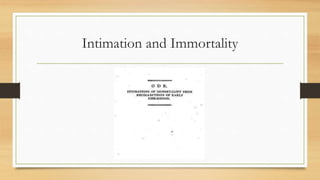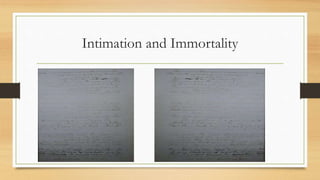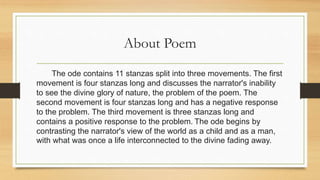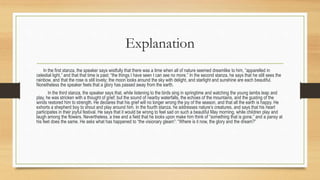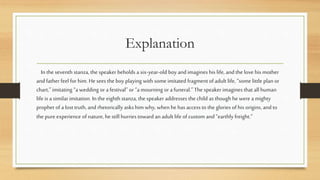The poem "Ode: Intimations of Immortality from Recollections of Early Childhood" by William Wordsworth discusses the changing perspective of nature from childhood to adulthood. In childhood, nature appears interconnected with divinity, but this fades with age. The poem contrasts the narrator's joyful, magical views as a child to his sense as an adult that a glory has passed from the world. It explores how growing up causes people to forget the "glories" of their early life, before responsibilities of adulthood. In the end, the poem finds solace in mature consciousness and the ability of nature to still stir deep thoughts.

